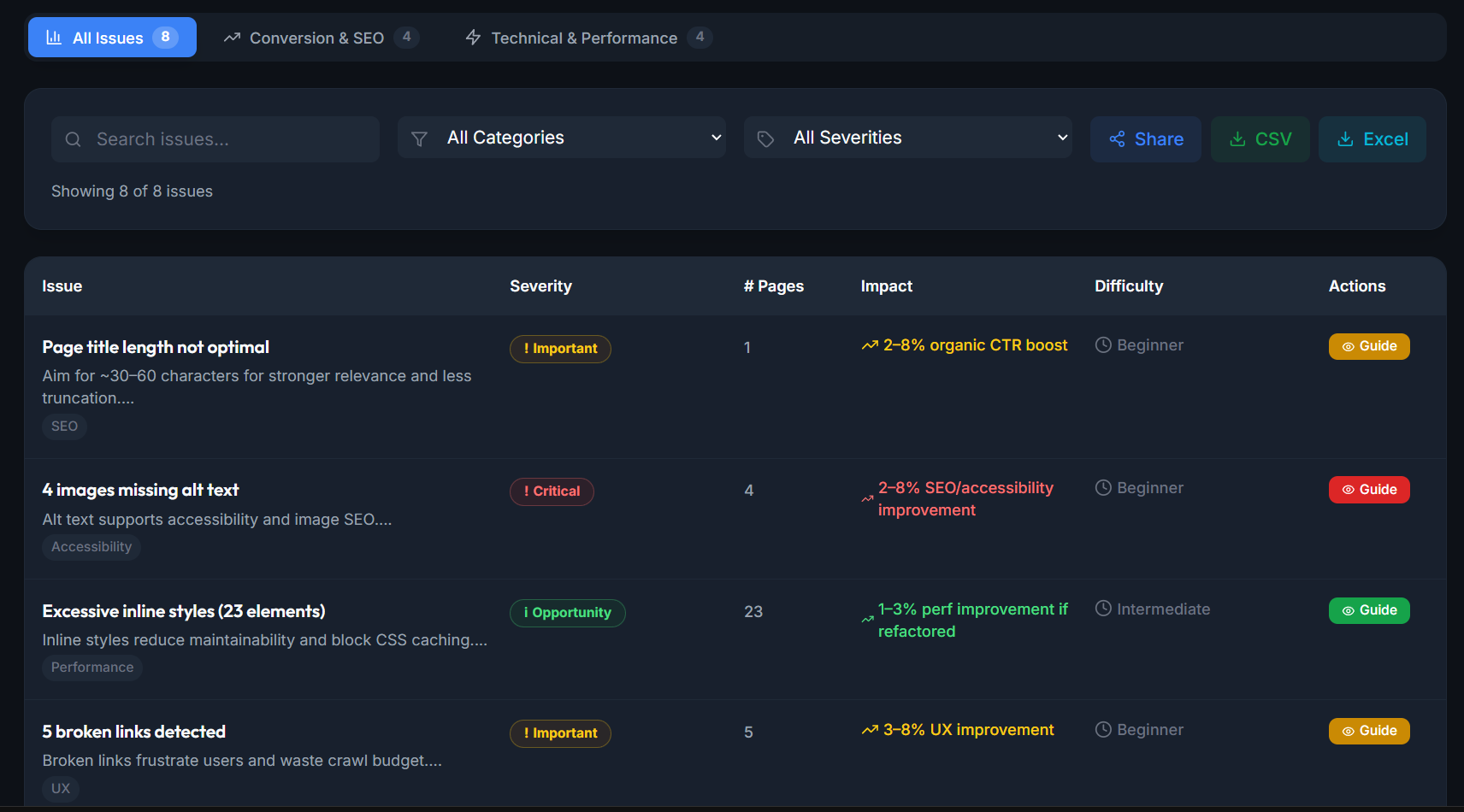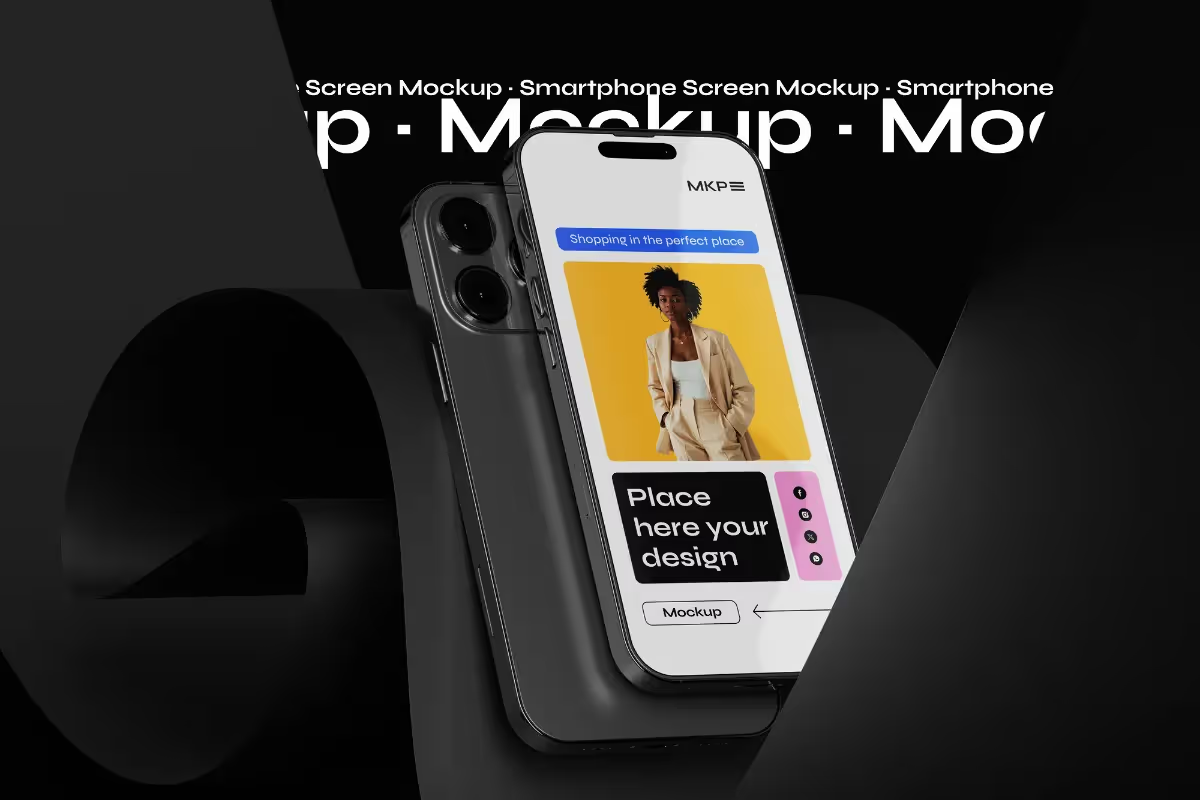Creating a startup website is no walk in the park. With countless competitors vying for attention, how can you make your brand shine? The answer lies in crafting a startup website design that truly embodies your brand's voice and values.
Make your website captivate your audience from the very beginning! User-centred design and digital branding are crucial for startups to launch a successful business. Let's discuss design tips for a professional, user-friendly, and enjoyable startup website.
Why Design Matters For a Startup Website?
Your website reflects your company values and helps visitors understand your brand. A good design gives you chances to create unforgettable first impressions and make your visitors think you are worth their attention, no matter if you are a newcomer.
Advantages Of Good Website For Startups
Every business strives to satisfy its customers’ requirements, and one of the ways to achieve this is through professional website development.
🧑 A) Enhanced User Experience
By adopting a user-centred design that focuses on the needs of your users, you will achieve a personalized experience that leaves your customers satisfied.
A well-designed startup website will capture all aspects of the user’s journey, from their initial interaction to the final conversation in an engaging and effortless manner. This, in turn, will increase customer loyalty and satisfaction as they will feel valued and appreciated by your business.
UX Examples
- Airbnb: The website has an intuitive user interface and a simple design, making it easy for users to find and book accommodation. They also provide personalized recommendations based on past bookings and searches, enhancing the user experience.
- Slack: Slack’s website design is focused on simplicity and clarity. The messaging platform is designed to streamline communication, and this is reflected in their website design as well. They use clear, concise language and visuals to guide users.
- Duolingo: The language learning app's website has a colourful and engaging design. The site is easy to navigate and features a clear call-to-action. It also uses gamification to make learning a new language fun and engaging.
These examples underscore the importance of a user-centred design in enhancing user experience and satisfaction.
-------------------------------------------------------
🖼️ B) Engaging Graphic Design
If you want to remain competitive in your industry, providing an appealing web design for startups is critical, as your competitors are also likely to be doing it. An old, low-quality startup website design will cause your competitors to outrank you, while a well-designed website will perform miracles.
A good web design with engaging content, visuals, and intuitive navigation will help you to stand out from your competitors through your uniqueness and attractiveness. A well-designed startup website is an opportunity to showcase your business's unique features.
UI Examples
- Spotify: The Spotify app's interface is a prime example of a well-executed UI design. The use of dark themes and vibrant album covers creates an aesthetic appeal that engages users. The tab-based navigation provides easy access to different sections such as Home, Search, and Your Library.
- Uber: Uber provides a straightforward and smooth user interface that enables users to book rides in just a few taps. The app displays clear information about the driver, vehicle, and the estimated fare, thus ensuring transparency.
- Asos: The Asos website boasts a clean and minimalist UI design which simplifies the user's shopping experience. The layout of the site makes it easy for users to browse categories, view product details, and check out with ease.
-------------------------------------------------------
🔍 C) Improved Search Engine Ranking
One of your main goals is to prioritize SEO and design a website that appears in the search engine results, because if your customers cannot find you, your hard work will be in vain.
SEO plays a key role in this case, and considering its design aspects is critical beyond keyword research and link building. A good website design will also impact your ranking based on the user experiences, and factors such as ease of navigation and fast loading speed.
Challenges Startup Websites Face in the UK
Starting a website in the UK is an exciting way to reach a larger audience, yet as a startup, you should be ready to face challenges that can hinder your growth and success. These include lawsuits, competition, and the risk of cyber attacks.
- There are several website accessibility laws in UK that advocate web accessibility to all persons regardless of disability. The Equality Act (2010), for instance, makes it illegal to discriminate against persons with disabilities and insists on accessibility to all users. Other principles that regulate web accessibility include the WCAG, which insists that a website should be perceivable, operable, robust, and understandable.
- As the owner of a startup website, it is imperative for you to anticipate the needs of your audience and adapt accordingly to promote inclusivity. Neglecting to comply with regulations can result in legal action and substantial fines, hindering the growth of your business.
- With the rise of eCommerce, UK startups face competition from online retail giants offering competitive pricing, variety, and convenience. Leverage personalized customer service, local expertise, and niche offerings to build customer relationships and thrive in the marketplace.
- Startups in the UK face challenges in cybersecurity, protecting sensitive customer data from cyber threats. Prioritize measures such as regular software updates, strong passwords, encryption, and employee education to counter this.
-------------------------------------------------------
Valuable 8 Steps For Startup Website Design
With the benefits and risks of web development for startups in mind, it is critical to know the steps you should take to improve your startup website design.
✅ 1. Keep It Simple
- Simplicity is a key principle for a startup website's success, with a simple website, users can focus on the most important information.
- Therefore, omit features like extra images, complicated animations and colours outside the brand profile.
- Focus on as few steps as possible and your forms should be minimal and lightweight.
- Allow users to sign up by email and save them the need to provide their details through several clicks.
-------------------------------------------------------
✅ 2. Make Navigation Intuitive
Have you come across a site where the navigation is so poor that you cannot click on it? Or a website without a menu bar? How long did it take you to close and navigate to the next step? If you do not want the above instances happening to your website users, the answer is to make your website navigation intuitive.
Navigation is a crucial element in the user experience and will determine your startup website success. When navigation is intuitive, users can find the information they are looking for and complete their tasks easily.
Poor navigation will frustrate your users, causing them to leave your website and look for other alternatives.
Tips to create intuitive website navigation:
- Utilize clear and consistent labels for your navigation items. Jargon and ambiguous terms might confuse your users, and you should replace them with simple and descriptive language.
- Organize your content in an intuitive manner by grouping related items and using clear headings.
- Utilize visual elements like icons, white space, and colours to guide users through the navigation.
- Test your navigation to ensure it is intuitive and easy to use. Through testing, you will identify any confusion or issues affecting your users and make necessary adjustments.
-------------------------------------------------------
✅ 3. Choose Right Color Combinations
Colour is crucial in web design, and your website colour scheme is critical to catching your customer’s attention and establishing your brand. This is because of the impact they have on the subconscious and their aesthetic purpose.
However, this is not an excuse to go over the top with colours as they could also be a distraction. To balance beauty and functionality and resonate with your business and brand, consider a perfect balance and contrast between the text and background to avoid straining your users.
Tips for startup website:
- Lighter colours that soothe the eyes
- Utilize different shades of colour for a unified look
- Avoid overcrowded background or foreground images
✅ 4. Choose Typography Wisely
Readability is the ease with which your audience has to read and understand the text on your website. This feature depends on the font size, weight, colour, line height, spacing, and contrast. Select a typography that is clear and legible for large blocks of text and small screens.
Popular website fonts:
- Georgia: A classic screen-optimized serif that lends a traditional yet highly readable feel to body text.
- Times New Roman: This formal serif has long signified professionalism and authority in both print and digital documents.
- Arial: A neutral, clean sans-serif prized for its versatility and crisp legibility at any size or resolution.v
- Verdana: Designed expressly for on-screen reading, its wide letter spacing makes long passages comfortable to scan.
- Helvetica: The modernist designer’s staple, known for its minimalist lines and unmatched adaptability across brand styles.
Too thin, bold, and fancy fonts will distract your readers and they may struggle to read some words. As a thumb rule, consider a simple and consistent font for your body and a distinctive font for the headings. This way, your visitors can read the information at a glance.
NOTE: As a rule of thumb, use a maximum of three fonts in your design and ensure they complement each other.
Lastly, ensure your fonts are scalable, allowing enlargement or reduction without distortion. The font should also be web browser friendly, as few people are patient with slow loading.
-------------------------------------------------------
✅ 5. Ensure Responsive Design
- Most users will use smartphones to access your website, hence the need to build your website mobile-friendly.
- A responsive website design will adapt to different screen sizes while allowing you to see all the important details and graphics.
- Smartphone users should be able to see things clearly without zooming in.
- Review your mobile site to ensure icons like the shopping cart and "order now" buttons are easily visible.
-------------------------------------------------------
✅ 6. Prioritize Speed
Speed is crucial if you are to keep visitors on your website so that they can decide to do business with you. The expectation of these visitors is that your site loads within 2 to 3 seconds.
Website speed tools:
- Pingdom: Provides real-time uptime monitoring and waterfall load analysis from multiple global test locations.
- PageSpeed Insights: Google’s tool that rates mobile and desktop speeds using Core Web Vitals and lists actionable fixes.
- GTMetrix: Combines Lighthouse data with granular waterfall charts to spotlight resource bottlenecks and optimization priorities.
- Google Lighthouse: An open-source audit suite in Chrome DevTools that scores performance, accessibility, SEO, and best practices in one report.
Tips to improve speed:
- Compress code and images
- Implementing a CDN solution
- Install compact software
- Removing unused CSS and JS files
Choosing the right hosting and site themes can have a big impact on your website's loading speed. Opt for fast and reliable hosting to give your website more resources and flexibility in terms of what you can install. By doing so, you can also eliminate bandwidth limits and attract more users to your site.
Hosting providers:
- Dreamhost: Developer-friendly hosting with fast SSD storage, unlimited traffic, and a rare 100 % uptime guarantee.
- Bluehost: A WordPress-endorsed host that bundles beginner-friendly dashboards, 24/7 support, and a free first-year domain.
- HostGator: Budget-conscious plans using cPanel, unmetered bandwidth, and one-click installs for popular CMSs.
- SiteGround: Performance-driven service on Google Cloud infrastructure with advanced caching and standout customer support.
-------------------------------------------------------
✅ 7. Use Attractive Visual Elements
- Lead with polished visuals: first impressions hinge on clean, professional-looking design.
- Keep the layout intuitive: guide visitors’ eyes with ample white space and clear content hierarchy.
- Stick to a cohesive colour palette: subtle, brand-aligned hues with strong contrast for readability.
- Choose stylish, legible typography: limit font pairings and prioritise easy scanning on all devices.
- Use high-quality images & lightweight videos: only where they add value, not bloat.
- Standardise icons and accents: consistent shapes and styles reinforce visual coherence.
- Apply a unified brand style across every page: seamless visuals boost credibility and recognition.
Examples of attractive elements:
- Apple: The website is famous for its sleek, minimalist design, showcasing high-quality product images against a plain white background. It's a perfect example of less is more in web design.
- Starbucks: Uses rich, warm tones and textures throughout its site, creating a cosy and inviting in-store feel. It also features well-crafted videos and infographics about its products and community initiatives.
- Tesla: The website uses stark, high-quality images of its vehicles and cutting-edge technology, effectively communicating the company's innovative nature. The website's dark theme is consistent with Tesla's sleek, modern brand image.
-------------------------------------------------------
✅ 8. Stick To Brand Identity
- Showcase your logo consistently: place it in the same spot (usually top-left) across all pages.
- Use a fixed colour palette: reinforce recognition by sticking to your core brand hues in buttons, headers, and accents.
- Standardise typography: limit yourself to 1–2 brand fonts and apply them steadily for headings and body text.
- Align iconography and imagery: choose icon sets and photo styles that match your brand tone (e.g., minimalist, bold, playful).
- Repeat your brand voice & motto: weave key phrases or taglines into hero sections, CTAs, and meta descriptions.
- Maintain style in every touchpoint: emails, confirmation pages, and social embeds should mirror the same visual rules.
- Create a style guide: document colours, fonts, logo rules, and tone to keep all future updates on-brand.
✅ Bonus - OnPage SEO Optimization
- Compelling & concise title tag: ≤ 60 characters, starts with the keyword, ends with your brand name.
- Persuasive meta description: ≤ 155 characters, includes the keyword and a clear value proposition or CTA to improve click-through rates.
- Logical heading hierarchy: use one <h1> per page, followed by descriptive <h2>/<h3> sections for scannability and topical depth.
- Clean, keyword-friendly URLs: short, lowercase, hyphen-separated slugs (e.g., /affordable-web-design-london).
- Image optimisation: compress files, use descriptive filenames, and add keyword-rich alt text for accessibility and image search.
- Internal linking: weave contextual links to related pages to distribute authority and keep users exploring.
- Schema markup (structured data): implement relevant JSON-LD (e.g., Organisation, Product, FAQ) to earn rich results.
- Core Web Vitals & speed: ensure LCP < 2.5 s, CLS < 0.1, and FID/TBT minimal via lazy loading, minified assets, and efficient hosting.
- Mobile-first responsiveness: test layouts, tap targets, and font sizes across breakpoints; Google indexes mobile versions first.
- HTTPS & security headers: a valid SSL certificate plus HSTS and X-Frame-Options safeguard users and boost trust.
Conclusion - Website For Startup
Testing and improving your website design is crucial to attract and retain customers. Applying the above tips will enhance customer experiences and lead conversion rates. Since web optimization practices change frequently, regular revisits are necessary to keep your website up to date.
Set a schedule for testing and assessing its appearance and functionality. A/B testing can help compare results and make necessary changes based on your discoveries.
Startup Web Design Guide
How much should I pay to get a website designed?
- DIY website builders (Wix, Squarespace, WordPress.com): essentially free to start, just your time then £0 – £25 per month for a basic plan.
- Freelance “brochure” sites (5-6 pages): £1,500 – £2,000 once, great for local service businesses or portfolios.
- Starter e-commerce on a theme (Shopify, WooCommerce): £2,000 – £3,000 for setup, product templates, and payment gateway.
- Bespoke agency build (10+ pages, custom UX, integrations): £4,000 – £8,000.
How much does a website cost per month in the UK?
- Domain name (.co.uk): about £2 a month when averaged over the year.
- Hosting: £3 – £10 for shared plans; £15 – £50 for cloud or VPS.
- SSL security certificate: free with Let’s Encrypt or roughly £5 a month for a managed option.
- CMS or builder subscription (Webflow, Shopify, Squarespace): £15 – £30 for most small sites; e-commerce plans start nearer £25.
- Optional maintenance retainer: £100+ if you’d like a pro to handle updates, backups, and tweaks.
- Optional marketing/SEO spend: from £150 a month upward.
Most small-business sites land in the £20 – £60 per-month range before advertising.
What is the 3 second rule in website design?
The “3-second rule” means your website has roughly three seconds to convince a new visitor to stick around instead of bouncing away. In that fleeting window, two things must happen:
1. The page finishes loading (or feels like it has). Sites that take longer than ~3 s see a sharp rise in abandonment, especially on mobile.
2. The hero section instantly answers three questions:
- Who are you? (logo or clear brand name)
- What value do you offer? (“Book dog-training classes in London”)
- What should I do next? (obvious call-to-action button)
What to do before starting a website?
- Set clear goals (leads, sales, bookings, brand awareness).
- Define your audience and their pain points.
- Research competitors and keywords to spot gaps.
- List must-have features (e-commerce, booking engine, multilingual, CMS, etc.).
- Choose your platform and budget.
- Gather content: copy, images, logos, legal pages (privacy, terms).
- Sketch a simple sitemap or wireframe.
- Get a quote by professionals
Can AI make a free website for free?
- Yes, to a point. Tools like Wix ADI, Durable, 10Web, or Framer AI will auto-generate a starter site on a sub-domain at no cost.
- Limitations: your site will carry platform branding, design options are basic, and advanced SEO or a custom domain require a paid upgrade.
- Human polish still matters: you’ll need to refine the copy, adjust the design to match your brand, add integrations, and ensure legal compliance.
Bottom line: AI can spin up a quick prototype for free, but a professional-looking site that converts and scales usually involves some investment, either your time or your budget.










